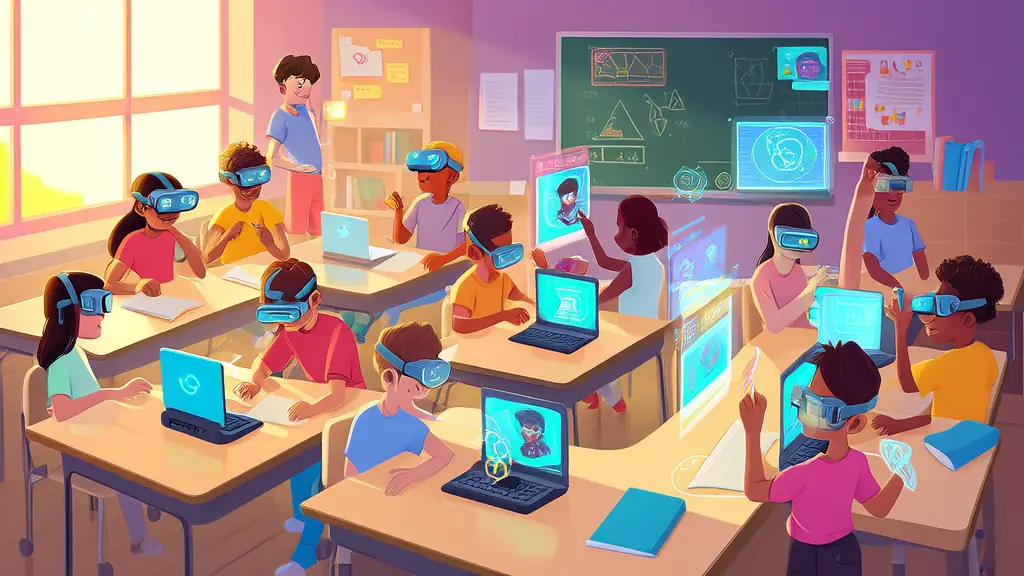
www.uitgedu.com | 自然英语拼读 | KET | PET | 英语点读学习资料
Empowering the Future: Navigating K12 Education in 2025
Welcome to the future of K12 education, where innovation and tradition blend to create a dynamic learning environment. As we stand on the cusp of a new era in education, it's essential for both parents and educators to stay informed about the latest developments, methodologies, and technologies that are shaping the educational landscape. In this blog post, we will explore the most effective teaching methods, delve into child development insights, highlight the latest trends in educational technology, and provide practical tips and inspiring success stories. Let’s dive in!
Latest Teaching Methodologies and Their Effectiveness
In recent years, there has been a significant shift towards more student-centered and interactive teaching approaches. One of the most prominent methodologies is Project-Based Learning (PBL). PBL encourages students to engage in real-world projects that require critical thinking, collaboration, and problem-solving. For example, a group of 8th graders might design and build a sustainable garden, integrating concepts from biology, math, and environmental science. This hands-on approach not only enhances understanding but also fosters a deeper connection with the material.
Another effective method is Flipped Learning, where students review instructional content at home through videos or readings and then use class time for interactive activities, discussions, and problem-solving. This approach allows for more personalized attention and support, as teachers can address individual needs and misconceptions during class time.
Child Development Insights and Research
Understanding child development is crucial for creating an effective and supportive learning environment. Recent research emphasizes the importance of social-emotional learning (SEL) in K12 education. SEL helps students develop self-awareness, self-management, social awareness, relationship skills, and responsible decision-making. A study by the Collaborative for Academic, Social, and Emotional Learning (CASEL) found that schools implementing SEL programs saw improvements in academic performance, behavior, and mental health.
Additionally, the concept of growth mindset—the belief that abilities and intelligence can be developed through dedication and hard work—has gained traction. Teachers and parents who foster a growth mindset in children help them become more resilient, persistent, and open to challenges. Encouraging phrases like "You can do better if you keep trying" instead of "You're so smart" can make a significant difference in a child's attitude towards learning.
Educational Technology Trends
Technology continues to play a pivotal role in K12 education, offering new tools and platforms that enhance the learning experience. Artificial Intelligence (AI) is one of the most exciting trends, with AI-powered tutoring systems providing personalized feedback and adaptive learning paths. For instance, platforms like Carnegie Learning use AI to tailor math instruction to each student's strengths and weaknesses, ensuring they receive the support they need to succeed.
Virtual and Augmented Reality (VR/AR) are also transforming the classroom. These immersive technologies allow students to explore historical sites, conduct virtual experiments, and even travel to outer space. Google Expeditions, for example, offers VR field trips that bring the world to the classroom, making learning more engaging and memorable.
Practical Tips for Parents and Teachers
For parents, staying involved in your child's education is key. Here are some practical tips:
- Communicate regularly with teachers to understand your child's progress and any areas that need improvement.
- Create a dedicated study space at home that is free from distractions and well-equipped with necessary supplies.
- Encourage a love for reading by setting aside time each day for family reading sessions and visiting the library together.
For teachers, here are some actionable strategies:
- Incorporate diverse teaching methods to cater to different learning styles, such as visual, auditory, and kinesthetic.
- Use formative assessments to gauge student understanding and adjust instruction as needed.
- Foster a positive classroom culture by promoting respect, empathy, and inclusivity, and by celebrating student achievements.
Success Stories and Case Studies
One inspiring success story comes from the Summit Public Schools in California, which have implemented a personalized learning model. By using a combination of project-based learning, mentoring, and digital tools, Summit has seen remarkable improvements in student engagement and academic performance. Graduation rates have increased, and more students are enrolling in college.
Another case study is the Chicago Public Schools' My Voice, My School initiative, which empowers students to take an active role in their education. Through student-led conferences and surveys, the program ensures that students' voices are heard and that their needs and interests are reflected in the curriculum. This has led to higher levels of student satisfaction and a more inclusive school environment.
Conclusion: Embrace the Future of K12 Education
The landscape of K12 education is evolving rapidly, and it's an exciting time to be part of this transformation. By embracing the latest teaching methodologies, staying informed about child development, leveraging educational technology, and following practical tips, both parents and educators can create a nurturing and effective learning environment. Let's continue to innovate, collaborate, and inspire the next generation of learners. Together, we can shape a brighter future for our children.
Stay curious, stay engaged, and let's make a difference in the world of education. If you have any questions or would like to share your own experiences, please leave a comment below. We’d love to hear from you!